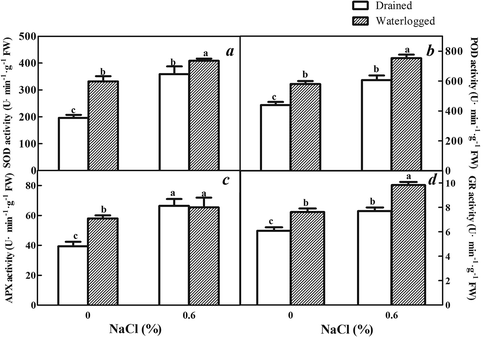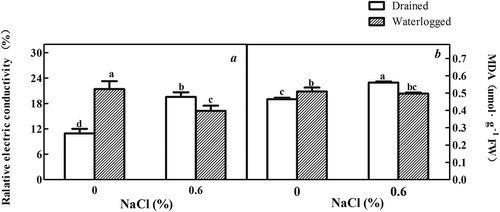Figures & data
Figure 1. Effects of NaCl, waterlogging and NaCl plus waterlogging co-stress on the growth of E. angustifolia seedlings. A photograph of E. angustifolia seedlings under NaCl, waterlogging and NaCl plus waterlogging co-stress (0, 0.6 NaCl) after two weeks of the indicated treatment.
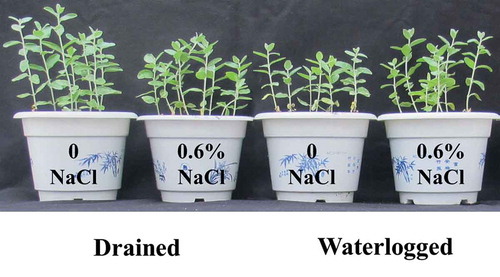
Figure 2. Effects of NaCl, waterlogging, and NaCl plus waterlogging co-stress on plant growth. (a) plant height, (b) fresh weight, (c) dry weight. Values are means ± SD (n = 5). Values in a column followed by different lowercase letters are significantly different at P ≤ 0.05 according to Duncan′s multiple range test. A) plant height was measured from the sand surface to the top of the main stem. B) fresh weight is the fresh weight of whole seedlings. C) dry weight is the dry weight of whole seedlings.
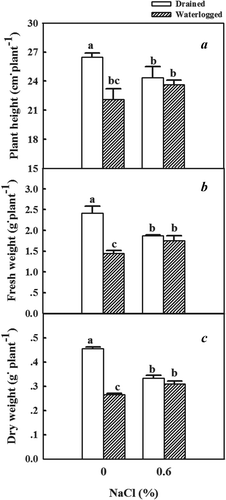
Table 1. The number of vessels of varying diameter of E. angustifolia main roots subjected to different treatments.
Figure 3. Effects of waterlogging and 0.6% NaCl plus waterlogging co-stress on root aerenchyma formation. Root cross sections were prepared at the position of the first branch of E. angustifolia. (a) A cross section of the primary root of an untreated control plant (Drained). (b) A cross section of the primary root of a plant kept under waterlogged conditions (Waterlogged) for two weeks. (c) A cross section of the primary root of a plant kept under 0.6% NaCl conditions (Drained with 0.6% NaCl) for two weeks. D) A cross section of the primary root of a plant kept under waterlogged conditions plus 0.6% NaCl stress (Waterlogged with 0.6% NaCl) for two weeks. Scale bar = 1.0 mm. Black arrows indicate the pith; Blue arrows indicate the vessels.

Figure 4. Effects of NaCl, waterlogging, and NaCl plus waterlogging co-stress on the porosity of E. angustifolia seedlings. The sixth euthylla: the stem at the position of the sixth euthylla; The fourth euthylla: the stem at the position of the fourth euthylla; Cotyledon: the stem at the position of cotyledon; root-stem junction; The first root: the root at the position of the first branch. Values are means ± SD (n = 5). Values in a column followed by different lowercase letters are significantly different at P ≤ 0.05 according to Duncan′s multiple range test.
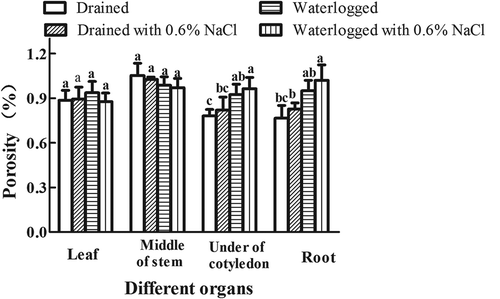
Figure 5. Effects of salinity, waterlogging, and NaCl plus waterlogging co-stress on photosynthesis. (a) net photosynthetic rate (Pn), (b) transpiration rate (Tr), (c) stomatal conductance (Gs), (d) intercellular CO2 concentration (Ci), (e) the maximal quantum yield of PSII photochemistry (Fv/Fm), (f) the effective quantum yield of PSII photochemistry (ФPSII), (g) Chlorophyll content and (h) photochemical quenching coefficient (qP) of expanded leaves of E. angustifolia seedlings treated for two weeks. Values are means ± SD (n = 5). For each variable, means with different lowercase letters are significantly different at P ≤ 0.05 according to Duncan’s multiple range test.
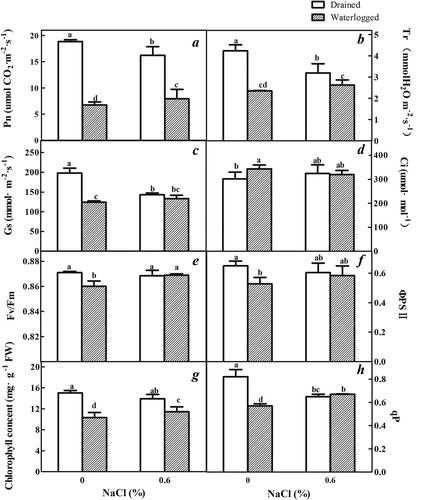
Figure 6. Effects of salinity, waterlogging, and NaCl plus waterlogging co-stress on inorganic ions. (a) Na+ content of expanded leaves, (b) K+ content of expanded leaves, (c) Root Na+ content, and (d) Root K+ content. All data are reflective of E. angustifolia seedlings treated for two weeks. Values are means ± SD (n = 5). Mean values with different lowercase letters are significantly different at P ≤ 0.05 according to Duncan′s multiple range test.
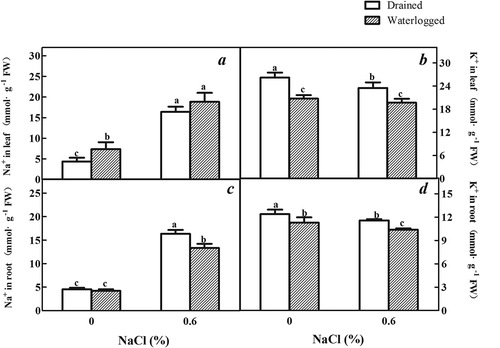
Figure 7. Effects of salinity, waterlogging, and NaCl plus waterlogging co-stress on organic material. (a) Proline content, (b) Soluble sugar content, (c) Organic acids content (d) Protein content. All data are reflective of expanded leaves E. angustifolia seedlings treated for two weeks. Values are means ± SD (n = 5). Mean values with different lowercase letters are significantly different at P ≤ 0.05 according to Duncan′s multiple range test.
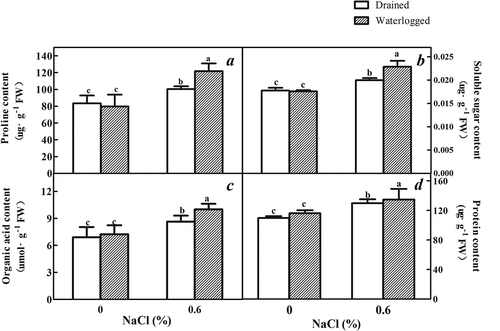
Figure 8. Effects of salinity, waterlogging, and NaCl plus waterlogging co-stress on osmotic potential (Ψs). Expanded leaves of E. angustifolia seedlings treated for two weeks were used. Values are means ± SD (n = 5). Mean values with different lowercase letters are significantly different at P ≤ 0.05 according to Duncan′s multiple range test.

Figure 9. Effects of salinity, waterlogging, and NaCl plus waterlogging co-stress on antioxidant enzyme activities. (a) SOD activity was determined by the nitrogen blue tetrazolium photoreduction method, (b) POD activity was determined by the guaiacol method, (c) APX activity was determined by ultraviolet absorption method, (d) GR activity was determined by monitoring the glutathione-dependent oxidation of NADPH at 340 nm. Values are means ± SD (n = 5). Expanded leaves of E. angustifolia seedlings were used. Mean values with different lowercase letters are significantly different at P ≤ 0.05 according to Duncan′s multiple range test.
